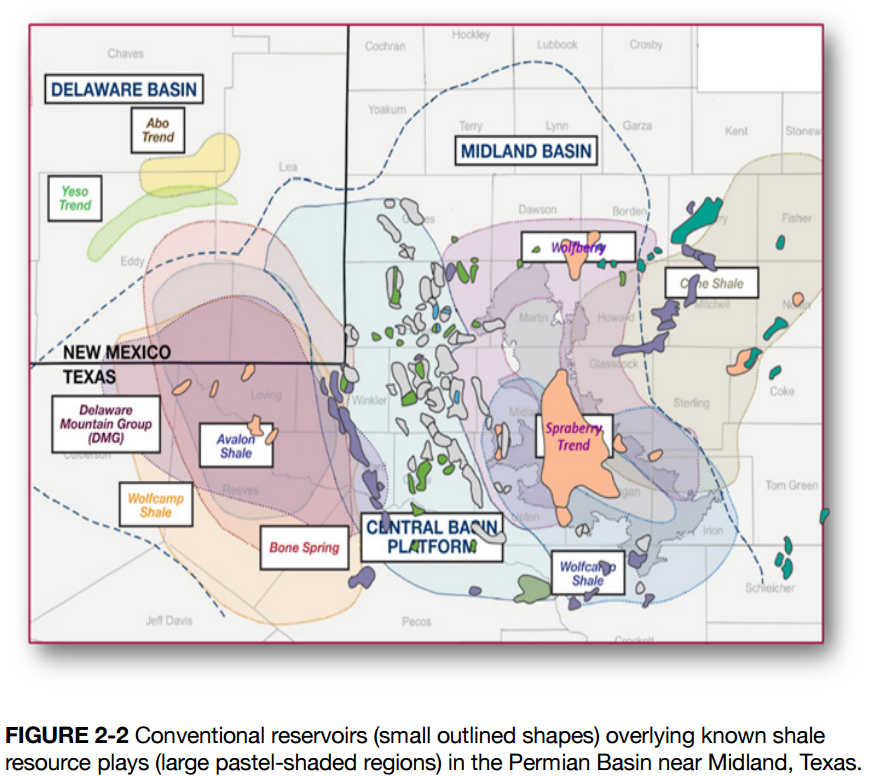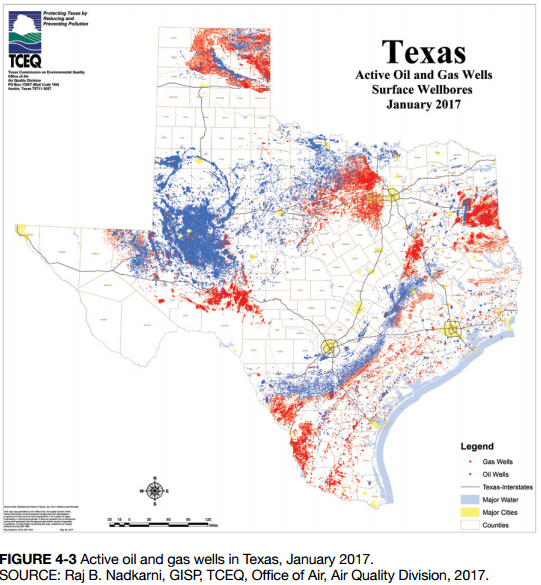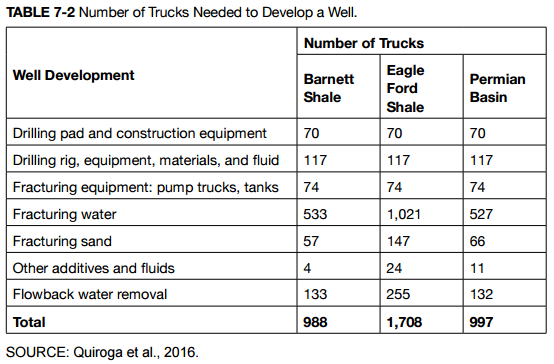Elite science group looked at 6 impacts
The Academy of Medicine, Engineering and Science of Texas (TAMEST) released a report on the effects of shale development in Texas yesterday.
The report, Environmental and Community Impacts of Shale Development in Texas, examines six key impact areas: seismicity, land, air, water, transportation and economic and social impacts.
Texas has dominated U.S. oil production throughout its history, and is still foremost among U.S. states. According to the EIA, Texas alone accounts for more than one-third of all U.S. oil production. According to TAMEST, Texas oil production in 2015 was larger than all but six countries.
The current shale boom, particularly the frenzy to produce the Permian, has ensured that Texas will remain a major player in American oil for years to come.
TAMEST is Texas’ premier scientific organization, bringing together the state’s best and brightest scientists and researchers. TAMEST membership includes all Texas-based members of the National Academies of Sciences, Engineering and Medicine and the state’s Nobel Laureates.
Earthquake activity 60 times higher in Oklahoma than Texas
TAMEST first examined the issue of earthquake activity, investigating the potential for induced seismicity and if such events have already occurred.
According to TAMEST, while faults are widespread through Texas, most known faults are stable and are not prone to generating earthquakes. Earthquakes have increased in recent years, but are still relatively infrequent. Between 2008 and 2016, there were, on average, 12 to 15 earthquakes of magnitude greater than M3.0. For reference, nearby Oklahoma experiences about 60 times more earthquakes of magnitude greater than M3.0. Earthquakes smaller than this are almost never noticeable by people.
Disposal wells, not fracturing, cause of quakes
The group’s conclusions confirm those of previous reports. Potentially induced earthquakes that have been felt at the surface have been associated with water disposal wells, not hydraulic fracturing. TAMEST’s primary recommendation regarding induced seismicity is simply to improve data sharing between groups, making things easier to analyze.
Multi-well pads continue to decrease landscape impacts
When considering the impacts of development on the landscape, TAMEST concludes that the vast amount of activity in the past decade has had a significant impact on the landscape. However, an equal number of vertical wells would have had a much larger impact. The continuing shift to multi-well pads will decrease the effect of development further.
One major difference between Texas and many other states relates to landowners.
Landowners in Texas who do not own the mineral rights under their property have less say in oil and gas operations than similar landowners in most other states. These landowners also have somewhat less protections in development of their property. One of TAMEST’s main recommendations is to examine the advantages and disadvantages of adopting a surface damages act for these landowners. One of TAMEST’s other recommendations for land issues is similar to its recommendation for seismic issues. While there is a great deal of data available in different locations, there is not a single usable database.
Small number of bad wells responsible for most air emissions
TAMEST’s research indicates that air quality emissions from oil and gas operations have roughly scaled with production rates. Notably, however, most types of emissions are dominated by a small number of sources. A small number of wells (and associated equipment) are responsible for most emissions. In particular, liquid storage tanks were found to be the weak point for emissions. In the Barnett Shale, for example, 90% of the cases of detectable emissions came from liquid storage tanks.
The problem of a small amount of the population contributing most of the emissions is not unique to oil and gas development. For example, about 10% of all passenger cars in the U.S. are responsible for half of all on-road emissions.
TAMEST recommends the use of infrared cameras or other reliable and relatively inexpensive emissions detectors. These would easily identify the small number of bad wells that need repair, which would make reducing emissions relatively simple.
TAMEST confirms fracturing into aquifers extremely unlikely
TAMEST then examined the use and safety of water in Texas. While each hydraulic fracturing job uses a large amount of water, overall hydraulic fracturing processes represent less than 1% of total water use in the state. Recycling produced water for use in fracturing jobs can reduce freshwater use, and TAMEST recommends additional research into these technologies. However, fracturing with produced water could have downsides. Produced water, even water treated to be used in fracturing, still has contaminants in it. Spills with produced water would be a larger problem than spills of fresh water used in fracturing.
Like most other reports, TAMEST concludes that the massive depth separation between oil-bearing zones and aquifers makes fracturing into drinking water zones extremely unlikely, and it has not been observed in Texas.
The USGS published a study in early June examining the effects of oil and gas production on drinking water quality. The study examined wells in the Eagle Ford, Haynesville and Fayetteville areas, and determined at in the regions sampled unconventional oil and gas production is not currently a significant source of methane or benzene to drinking water wells.
Eagle Ford wells need more than 1,700 trucks per well
TAMEST also examined the effects of increased truck traffic caused by development. A modern unconventional well requires a surprisingly large number of trucks to bring a well on production. While the total needed varies between basins, a single well can need more than 1,000 trucks to come online, the group calculated.
Most of the Permian is sparsely populated, and many roads were never meant to handle the large number of trucks needed by current development. TAMEST recommends two main responses to the problem of truck traffic. Development of other ways to transport the needed materials would go a long way to relieving the stress on the road system. Additionally, active preparation in advance of drilling activity would allow areas to improve their road system before traffic begins, avoiding the current strain.
The positive effects: Permian economic activity exceeds that of Hungary
TAMEST finally addressed the positive effects of oil and gas development on the economy of Texas. While the exact numbers are hotly debated, economic data shows development has local, regional, and state-wide positive effects.
Recent estimations indicated the oil and gas industry in the Permian Basin in 2013 sustained over 546,000 jobs and generated $137.8 billion in economic output. If these estimations are correct, this means Permian basin activity in 2013, before the Permian boom took off, was larger than the total GDP of Hungary.
Economic results of activity in other basins, while certainly not as large as the Permian, is still impressive. Barnett Shale activity in 2013 generated an estimated $12.8 billion in gross product and supported about 115,000 jobs. Eagle Ford activity in 2013 employed about 150,000 people and resulted in $87.8 billion in economic output.




